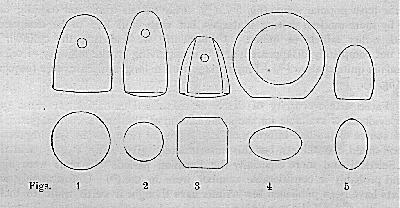
|
|||
| [ Previous ][Contents][ Next ] |
|||
|
In so brief a span of years we can hardly expect to find radical changes in engraving technique, and therefore this criteria is of little value As a means of identification for Parthian and Sasanian seals. The point, the drill, and the wheel were in use from Achaemenian times onward. On the ordinary Parthian or Sasanian seal the point was seldom employed except in the case of some refractory material such as quartz (pl. I, no. 1). The drill with a simple round point was also infrequent (as an exception, see pl. I, no. 2), and by far the bulk of the stones are produced on the wheel (pl. I, nos. 3, 5-8.(13) Probably it was only by this method that engravers could keep up with the tremendous popular demand for their products. While the Achaemenian period (c. 550 B.C. - 330 B.C.) does not strictly fall within the scope of this article, the close connection and continuity of development in shape and design with the succeeding periods make a few words necessary.(14) Both cylinder and stamp seals were used in Achaemenid times. One of the most characteristic shapes was the cone with rounded top and convex base (fig. 1-2). Another common style had flat sides with beveled edges and a square or rectangular base(fig. 3). Occasionally the sides were engraved.(15) The scenes depicted most frequently are the combat between the king and some wild beast, various fanciful animals, hunting scenes or the worshiper before the altar from which flames arise. Winged sphinxes sometimes occur and the winged sun disk is a common symbol. 
FIG. 1 | |||
|
|||
|
[ Previous ][Contents][ Next ] |
|||
|
Created by the Digital
Documentation Center at AUB
in collaboration with Al
Mashriq of Høgskolen i
Østfold, Norway. 980519 pas - Email: hseeden@aub.edu.lb |